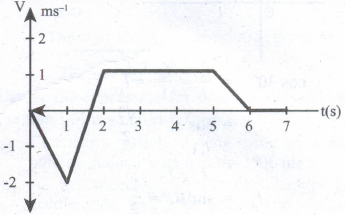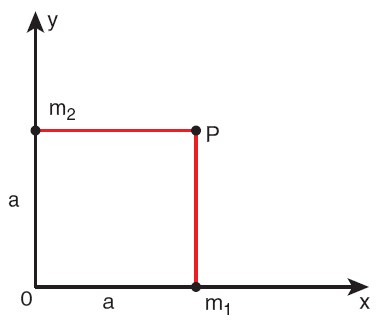- State Board
-
12th Standard
-

Biology
-

Computer Applications
-

Computer Science
-

Business Maths and Statistics
-

Commerce
-

Economics
-

Maths
-

Chemistry
-

Physics
-

Computer Technology
-

History
-

Accountancy
-

Tamil
-

Maths
-

Chemistry
-

Physics
-

Biology
-

Computer Science
-

Business Maths and Statistics
-

Economics
-

Commerce
-

Accountancy
-

History
-

Computer Applications
-

Computer Technology
-

English
12th Standard stateboard question papers & Study material
தமிழ் Subjects
English Subjects
-
-
11th Standard
-

Maths
-

Biology
-

உயிரியல் - தாவரவியல்
-

Economics
-

Physics
-

Chemistry
-

History
-

Business Maths and Statistics
-

Computer Science
-

Accountancy
-

Commerce
-

Computer Applications
-

Computer Technology
-

Tamil
-

Maths
-

Commerce
-

Economics
-

Biology
-

Business Maths and Statistics
-

Accountancy
-

Computer Science
-

Physics
-

Chemistry
-

Computer Applications
-

History
-

Computer Technology
-

Tamil
-

English
11th Standard stateboard question papers & Study material
தமிழ் Subjects
English Subjects
-
-
9th Standard
-

-

-

-

-

-

-

Maths
-

Science
-

Social Science
-

Maths
-

Science
-

Social Science
9th Standard stateboard question papers & Study material
தமிழ் Subjects
English Subjects
-
-
6th Standard
-

Maths
-

Science
-

Social Science
-

Maths
-

Science
-

Social Science
6th Standard stateboard question papers & Study material
தமிழ் Subjects
English Subjects
-
-
10th Standard
-

Maths
-

Science
-

Social Science
-

Tamil
-

Maths
-

Science
-

Social Science
-

English
-

English
10th Standard stateboard question papers & Study material
தமிழ் Subjects
English Subjects
-
-
7th Standard
-

Maths
-

Science
-

Maths
-

Science
-

Social Science
7th Standard stateboard question papers & Study material
தமிழ் Subjects
English Subjects
-
-
8th Standard
-

கணிதம் - old
-

Science
-

Social Science
-

கணிதம்
-

Maths
-

Science
-

Social Science
8th Standard stateboard question papers & Study material
தமிழ் Subjects
English Subjects
-
-
12th Standard
- CBSE Board
-
12th Standard CBSE
-

Biology
-

Chemistry
-

Physics
-

Maths
-

Accountancy
-

Business Studies
-

Economics
-

Introductory Micro and Macroeconomics
-

Computer Science
-

Geography
-

English
-

History
-

Indian Society
-

Physical Education
-

Sociology
-

Political Science
-

Engineering Graphics
-

Bio Technology
-

Entrepreneurship
-

Hindi Elective
-

Home Science
-

Legal Studies
-

Psychology
-

Hindi Core
-

Tamil
12th Standard CBSE Subject Question Paper & Study Material
-
-
11th Standard CBSE
-

Physics
-

Mathematics
-

Chemistry
-

Biology
-

Economics
-

Business Studies
-

Accountancy
-

Computer Science
-

English
-

Geography
-

History
-

Physical Education
-

Psychology
-

Sociology
-

Bio Technology
-

Enterprenership
-

Hindi
-

Home Science
-

Political Science
-

Applied Mathematics
11th Standard CBSE Subject Question Paper & Study Material
-
- 10th Standard CBSE
-
9th Standard CBSE
-

Social Science
-

Mathematics
-

Science
-

English
-

Hindi
9th Standard CBSE Subject Question Paper & Study Material
-
-
8th Standard CBSE
-

Social Science
-

Science
-

Mathematics
-

English
8th Standard CBSE Subject Question Paper & Study Material
-
-
7th Standard CBSE
-

Social Science
-

Science
-

Mathematics
-

English
7th Standard CBSE Subject Question Paper & Study Material
-
-
6th Standard CBSE
-

Social Science
-

Science
-

Mathematics
-

English
6th Standard CBSE Subject Question Paper & Study Material
-
-
12th Standard CBSE
- Free Online Test
- News
- Study Materials
-
Students
-

Stateboard Tamil Nadu
-

CBSE Board
-

Free Online Tests
-

Educational News
-

Scholarships
-

Entrance Exams India
-

Video Materials
Study Materials , News and Scholarships
-
-
Students

11th Standard Physics English Medium - Important 3 Mark Question Paper and Answer Key 2022 - 2023 Study Materials Dec-31 , 2022
QB365 provides a detailed and simple solution for every Possible Questions in Class 11 Physics Subject - Important 3 Mark English Medium. It will help Students to get more practice questions, Students can Practice these question papers in addition to score best marks.
11th Standard Physics Important 3 Mark Question with Answers
11th Standard
-
Reg.No. :
Physics
Time :
02:00:00 Hrs
Total Marks :
90
-
In a submarine equipped with sonar, the time delay between the generation of a pulse and its echo after reflection from an enemy submarine is observed to be 80 sec. If the speed of sound in water is 1460 ms-1. What is the distance of enemy submarine?
-
If the value of universal gravitational constant in SI is 6.6 x 10−11 Nm2 kg−2, then find its value in CGS System?
-
Calculate the average velocity of the particle whose position vector changes from \(\overrightarrow { { r }_{ 1 } } =5\hat { i } +6\hat { j } \) to \(\overrightarrow { { r }_{ 2 } } =2\hat { i } +3\hat { j } \) in a time 5 second.
-
The following velocity-time graph represents a particle moving in the positive x-direction. Analyse its motion from 0 to 7 s. Calculate the displacement covered and distance travelled by the particle from 0 to 2 s.

-
Given two vectors \(\vec A=2\hat i+4\hat j+5\hat k\) and \(\vec B=\hat i+3\hat j+6\hat k\). Find the product \(\vec A.\vec B\), and the magnitudes of \(\vec A\) and \(\vec B\) . What is the angle between them?
-
A particle moves in a circle of radius 10 m. Its linear speed is given by v = 3t where t is in second and v is in ms-1.
(a) Find the centripetal and tangential acceleration at t = 2 s.
(b) Calculate the angle between the resultant acceleration and the radius vector. -
A bob attached to the string oscillates back and forth. Resolve the forces acting on the bob into components. What is the acceleration experience by the bob at an angle ፀ.
-
A block of mass m slides down the plane inclined at an angle 60° with an acceleration \(\frac { g }{ 2 } \). Find the coefficient of kinetic friction.
-
An object of mass 1 kg is falling from the height h = 10m. Calculate
(a) The total energy of an object at h = 10 m.
(b) Potential energy ofthe object when it is at h = 4 m.
(c) Kinetic energy of the object when it is at h = 4 m.
(d) What will be the speed of the object when it hits the ground?
(Assume g = 10 m s-2) -
From a uniform disc of radius R, a small disc of radius \(\frac{R}{2}\) is cut and removed as shown in the diagram. Find the center of mass of the remaining portion of the disc.
-
A solid sphere is undergoing pure rolling. What is the ratio of its translational kinetic energy to rotational kinetic energy?
-
Explain the variation of g with depth from the Earth’s surface.
-
Two particles of masses m1 and m2 are placed along the x and y axes respectively at a distance ‘a’ from the origin. Calculate the gravitational field at a point P shown in figure below.

-
A solid sphere has a radius of 1.5 cm and a mass of 0.038 kg. Calculate the specific gravity or relative density of the sphere.
-
When you mix a tumbler of hot water with one bucket of normal water, what will be the direction of heat flow? Justify.
-
During a cyclic process, a heat engine absorbs 500 J of heat from a hot reservoir, does work and ejects an amount of heat 300 J into the surroundings (cold reservoir). Calculate the efficiency of the heat engine?
-
Why does heat flow from a hot object to a cold object?
-
Consider a particle undergoing simple harmonic motion. The velocity of the particle at position x1 is v1 and velocity of the particle at position x2 is v2. Show that the ratio of time period and amplitude is
\(\frac { T }{ A } =2\pi \sqrt { \frac { { x }_{ 2 }^{ 2 }-{ x }_{ 1 }^{ 2 } }{ { { v }_{ 1 }^{ 2 }x }_{ 2 }^{ 2 }-{ { v }_{ 2 }^{ 2 }x }_{ 1 }^{ 2 } } } \) -
Let f be the fundamental frequency of the string. If the string is divided into three segments l1, l2 and l3 such that the fundamental frequencies of each segments be f1, f2 and f3, respectively. Show that \(\frac { 1 }{ f } =\frac { 1 }{ { f }_{ 1 } } +\frac { 1 }{ { f }_{ 2 } } +\frac { 1 }{ { f }_{ 3 } } \)
-
Define Dimensional Constant. Give example.
-
How many parallactic second are there in one Astronomical unit?
Given data:
1 parallactic second = 3.08\(\times\)1016m
1 Astronomical unit = 1.496\(\times\)1011m -
"Technological advancements owe a great deal to the developments in physics" - Explain.
-
A body under the action of a force \(\vec { F } =(4\vec { i } -8\vec { j } +8\vec { k } )\)N acquires an acceleration of 2 ms-2. Find the mass of the body
-
What are non-inertial frames of reference?
-
When a force \(\overrightarrow{\mathrm{F}}=(8 \overline{\mathrm{i}}-10 \overline{\mathrm{j}}+6 \overline{\mathrm{k}}) \mathrm{N}\) produces an acceleration of \(2 \mathrm{~m} / \mathrm{s}^{2}\) on a body. Calculate the mass of the body.
-
A body is displaced 10 \(\hat{j}\) under the force of \(-2\hat{j}+15\hat{j}+6\hat{i}\ N.\) Calculate the work done.
-
Can a body have energy without momentum?
-
A railway carriage of mass 9000 kg moving with a speed of 36 kmph collides with a stationary carriage of the same mass. After the collision, the carriages get coupled and move together. What is their common speed after the collision? What type of collision is this?
-
A pump on the ground floor of a building can pump up water to fill a tank of volume 30 m3 in 15 min. If the tank is 40 m above the ground, how much electric power is consumed by the pump. The efficiency of the pump is 30%.
-
State the conditions so that transfer of kinetic energy during a collision.
Answer All The Questions
30 x 3 = 90
*****************************************
Answers






 11th Standard Physics Syllabus
11th Standard Physics Syllabus  11th Standard Physics Study Materials
11th Standard Physics Study Materials 11th Standard Physics MCQ Practise Tests
11th Standard Physics MCQ Practise Tests 

Reviews & Comments about 11th Standard Physics English Medium - Important 3 Mark Question Paper and Answer Key 2022 - 2023
Write your Comment